Top Rankings
Queen Bee SD 16 School District ranks among the top 20% of public school district in Illinois for:
Category
Attribute
Diversity
Most diverse schools (Top 1%)
For the 2025 school year, there is 1 public preschool serving 93 students in Queen Bee SD 16 School District.
Public Preschools in Queen Bee SD 16 School District have a diversity score of 0.59, which is less than the Illinois public preschool average of 0.70.
Minority enrollment is 87% of the student body (majority Hispanic), which is more than the Illinois public preschool average of 58% (majority Hispanic).
Overview
This School District
This State (IL)
# Schools
4 Schools
1,387 Schools
# Students
1,685 Students
512,005 Students
# Teachers
125 Teachers
38,167 Teachers
Student : Teacher Ratio
13:1
13:1
District Rank
Queen Bee SD 16 School District, which is ranked within the top 50% of all 844 school districts in Illinois (based off of combined math and reading proficiency testing data) for the 2020-2021 school year.
Overall District Rank
#383 out of 852 school districts
(Top 50%)
(Top 50%)
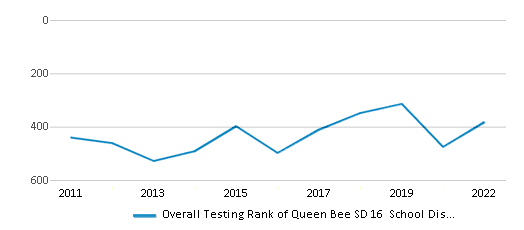
Math Test Scores (% Proficient)
(20-21)18%
28%

Reading/Language Arts Test Scores (% Proficient)
36%
30%
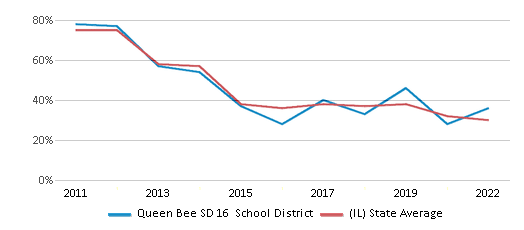
Science Test Scores (% Proficient)
52%
50%
Students by Ethnicity:
Diversity Score
0.69
0.70
# American Indian Students
7 Students
1,218 Students
% American Indian Students
1%
n/a
# Asian Students
377 Students
20,502 Students
% Asian Students
22%
4%
# Hispanic Students
793 Students
162,757 Students
% Hispanic Students
47%
32%
# Black Students
102 Students
94,002 Students
% Black Students
6%
18%
# White Students
360 Students
213,555 Students
% White Students
21%
42%
# Hawaiian Students
n/a
447 Students
% Hawaiian Students
n/a
n/a
# Two or more races Students
46 Students
19,465 Students
% of Two or more races Students
3%
4%
Students by Grade:
# Students in PK Grade:
93
76,065
# Students in K Grade:
156
71,052
# Students in 1st Grade:
156
68,700
# Students in 2nd Grade:
140
66,332
# Students in 3rd Grade:
212
56,657
# Students in 4th Grade:
160
53,643
# Students in 5th Grade:
186
46,874
# Students in 6th Grade:
196
28,049
# Students in 7th Grade:
196
22,127
# Students in 8th Grade:
190
22,424
# Students in 9th Grade:
-
40
# Students in 10th Grade:
-
12
# Students in 11th Grade:
-
12
# Students in 12th Grade:
-
18
# Ungraded Students:
-
-
District Revenue and Spending
The revenue/student of $23,407 is higher than the state median of $21,990. The school district revenue/student has stayed relatively flat over four school years.
The school district's spending/student of $23,597 is higher than the state median of $21,244. The school district spending/student has stayed relatively flat over four school years.
Total Revenue
$39 MM
$41,381 MM
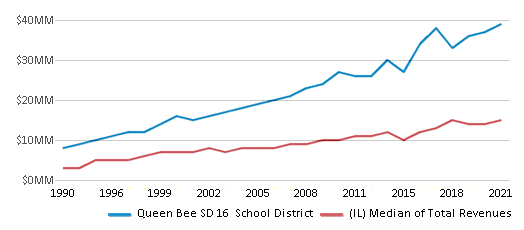
Spending
$40 MM
$39,976 MM
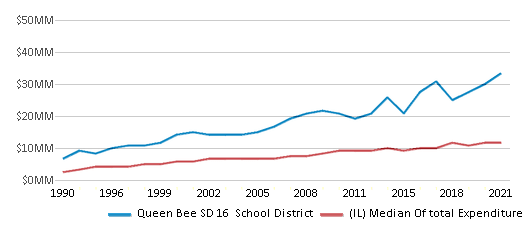
Revenue / Student
$23,407
$21,990
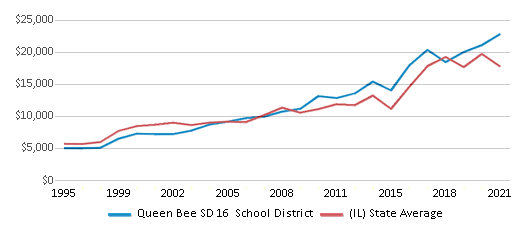
Spending / Student
$23,597
$21,244
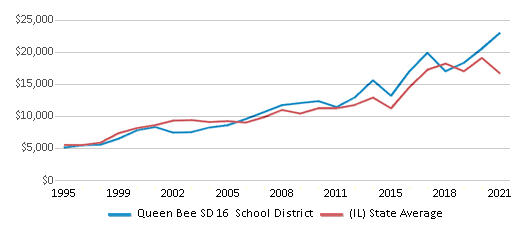
Best Queen Bee SD 16 School District Public Preschools (2025)
School
(Math and Reading Proficiency)
(Math and Reading Proficiency)
Location
Grades
Students
Rank: n/an/a
1525 Bloomingdale Rd
Glendale Heights, IL 60139
(630) 344-5603
Glendale Heights, IL 60139
(630) 344-5603
Grades: PK
| 93 students
Recent Articles

Year-Round Or Traditional Schedule?
Which is more appropriate for your child? A year-round attendance schedule or traditional schedule? We look at the pros and cons.

Why You Should Encourage Your Child to Join a Sports Team
Participating in team sports has a great many benefits for children, there is no doubt. In this article you will learn what those benefits are.

White Students are Now the Minority in U.S. Public Schools
Increasing birth rates among immigrant families from Asia and Central and South America, combined with lower birth rates among white families, means that for the first time in history, public school students in the United States are majority-minority. This shift in demographics poses difficulties for schools as they work to accommodate children of varying language abilities and socio-economic backgrounds.





